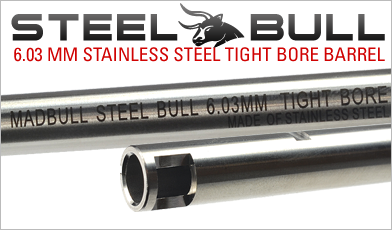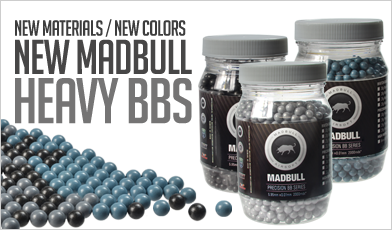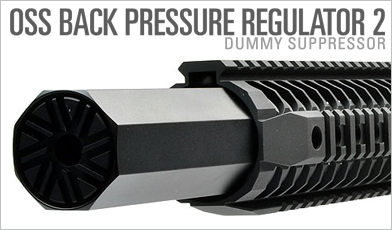詳細
MADBULL AIRSOFT BATTERY MODEL# PowerX-02 [9.6V, 1500mAh]
NOTE: You must use MadBull LFP Battery charger. Sold separately.
You have to know that Li-ion and Li-Poly are explosive and flammable under some conditions.
Even a lot of people claim it is safe but no one can guarantee.
Federal Aviation Administration (FAA) even banned Non-Rechargeable Lithium Battery. [FAA link]
Some more FAA test data [Test data link-1] [Test data link-2]
If you don't believe US Federal testing report, try to check Youtube video. (To see is to believe)
YouTube Link
Because of the safety reason, many Airsoft manufacturers and distributors are hesitated to promote Lithium batteries.
In 1989, Arumugam Manthiram and John Goodenough of the University of Texas at Austin showed that cathodes containing polyanions, eg. sulfates, produce higher voltage than oxides due to the inductive effect of the polyanion.[10] Following this, in 1996 Goodenough and co-workers discovered the electrochemical utility of the olivine material lithium iron phosphate, LiFePO4. It is an important and emerging cathode material for lithium-ion batteries due in part to its enhanced safety compared to other lithium-ion chemistries. Cells containing lithium iron phosphate cathodes have been commercialised by multiple companies, including Phostech, Valence Technology, A123Systems, Aleees and Lithium Technology Corp.* [Information from Wikipedia]
It is our honor to introduce this "Sci-Fi" kinda technology to Airsoft players.
Q&A:
(1) Comparison: (We try to find out the most accurate data. If we did something wrong, please let us know.)
| LFP | Li-Poly | NiMH | |
| Safety | Good | Bad | Good |
| Price | 62 USD | 80-120 USD | 35-90 USD |
| mAh/ Price | Ok | Bad | Good |
| Battery Life | Best | Ok | Ok |
| C value | Best | Best | Ok |
| Available Voltage | 9.6 /12.8 | 11.1 | 8.4/9.6/10.8 |
| High Environment Temperature | Good | Bad | N/A |
| Vol / mAh | Ok | Best | Ok |
| 4 cells Charger with Balancer price | 60 USD | 80 USD | N/A |
| Charging time | Fast | Fast | Slow |
(2) LFP Safety issue:
There is NO safety issue for users. Even you use the wrong charger, the battery will only be dead and will not be exploded.
(3) The real C value?
There are many Li-poly batteries claim they have high C value. However, you have to know that there are only a few reputable Li-poly cells manufacturers in the world. Most of the Li-poly manufacturer didn't tell you who produce the "cells" and the C value they claimed may not be true.
Our LFP batteries cells are coming from Aleees and Aleees are well-known company in the battery industries.
Aleees's C value are tested as the real value.
(4) Are LFP batteries the best batteries for AEG?
Yes and No.
LFP batteries are the newest Lithium battery in the market. Compared to Li-poly batteries, LFP's size is bigger than Li-poly. However, the C value is high and it is safe. Plus, it is cheaper.
(5) Charger and balancer:
You have to buy our charger set (with balancer included.)
Our design is totally different from others.
Our Charger / Balancer can charger up to 4 cells "independently" which will guarantee your battery have full charge. Unlike other balancers/ chargers, the current go through every battery at the same time.
(6) More information about batteries:
LFP batteries: Go wikipedia
Li-poly batteries: Go wikipedia
(7) Manufacturing process and testing video:
Click here

Features:
- LATEST BATTERY TECHNOLOGY. USED IN HYBRIDS AND ELECTRIC CARS
- FLAT DISCHARGE CURVE: MAX POWER AVAILABLE UNTIL DISCHARGED
- HIGH DISCHARGE RATE, VOLTAGE, CURRENT AND モCヤ
- FAST FORCED CHARGING
- LARGE OVERCHARGE TOLERANCE (SAFER)
- EXTREMELY LONG BATTERY LIFE (5 TIMES THAN LiCoO2 LI-PO) (ABOUT 2000 TIMES UNDER REGULAR USE)
- HIGH TEMP. PERFORMANCE
- SAFER THAN ANY OTHER LITHIUM ION TECHNOLOGY
- SPECIAL DESIGN FOR AIRSOFT AEGS; NOT AN RC REBRAND BATTERY
- ENHANCE YOUR AEG (BPS, BALLS PER SECOND, BBS PER SECOND)
Specifications:
Nominal Capacity 1500mAh* / Nominal Voltage 9.6V** / CELL internal resistance ≦10mΩ / Charge Current max. 3A(2C)
Voltage max. 3.65V / Discharge Continuous Current Max. 22.5A per cell, / Burst Current Max. 40.0A per cell or higher/ Voltage cut-off 2.0V/ Cycle Life / >80% Retention / 1C 1000 cycle / 10 C 100 cycle / Self -Discharge *Nominal capacity (average discharge capacity) : discharge current 0.5C, end of voltage 2.0V, temperature 23ï¾±2℃.
**Nominal voltage (average discharge voltage): discharge current 0.5C, end of voltage 2.0 V, temperature 23ï¾±2℃.
Warning:
Failure to follow these instructions can quickly result in leak, explosion, or permanent damage to the batteries and its surrounding and may even start a fire.
(1) A new battery comes in a discharged condition and must be charged before use (refer to the device manual for charging instructions).
(2) The battery should be used in the environment as listed below. Otherwise, the battery lifespan and function would be substantially reduced. Under extreme environments, batteries may overheat, explode, or even catch fire
(3) Similar to NiCd and NiMH batteries, lithium-polymer batteries can release extremely high voltages.
(4) Always use battery manufacture approved chargers to recharge the batteries.
(5) Always empty the chamber of your AEG, remove the magazine, put on barrel cap and put on safety before you change the battery.
(6) Never place the battery near the heater, fire, or any heat sources. Never throw the battery into the water or keep the batteries in a damp environment.
(7) Never allow a batteryï¾’s positive and negative leads to accidentally touch each other.
(8) Never connect the battery to the wall plug or cigarette lighter plug in vehicles.
(9) Never dispose batteries with fire or warm up the battery using any heat sources.
(10) To avoid short-circuit, all batteries should be stored or shipped free of any conductive materials, including necklace, hairpin or any metals.
(11) Never hit or throw the battery against any walls, floors or hard subjects which may damage the batteries by violent mechanical vibration.
(12) Never use hammer, nail or any sharp object to pierce or penetrate through the battery insulator.
(13) Never solder the batteryï¾’s connectors with wires.
(14) Never disassemble the batteries in any means.
(15) Never charge the battery in an extreme hot environment.
(16) Never place the battery in a microwave or pressurized container.
(17) Never use the lithium-polymer batteries with the disposable batteries or rechargeable batteries in different types, capacity or brands.
(18) Before and after every use of your lithium-polymer batteries, inspect all cells in the pack as much as possible to ensure no physical damages, discolor, heat emission, or swelling in evident. Such signs can often indicate that a dangerous problem exists and the batteries should be disconnected and disposed immediately.
(19) Always store the lithium-polymer batteries in a secure location away from children. If a child accidentally ingests the battery, the child should receive medical attention immediately.
(20) Remove or dispose the batteries immediately when batteries are leaking watery substance and emit strange order.
(21) Do not allow the batteryï¾’s electrolyte to get in the eyes or skin. Wash affected areas with soap and water immediately if they come in contact with the electrolyte. If electrolyte makes contact with the eyes, flush with large amounts of water for 15 minutes and seek medical attention immediately.
(22) To prolong battery life-span and to ensure battery full function, charged battery should rest for at least one hour before discharging.
(23) Never keep the batteries in an extreme environment, such as direct under sun light or inside the car during hot summer. Otherwise, batteries will overheat or even ignited to substantially shorten the lifespan and damage the function of the batteries.
Working environment: Charge:0℃~45℃/ Discharge: -20℃~60℃ / Storage for 30 days:-20℃~45℃ / Storage for 90 days:-20℃~35℃




